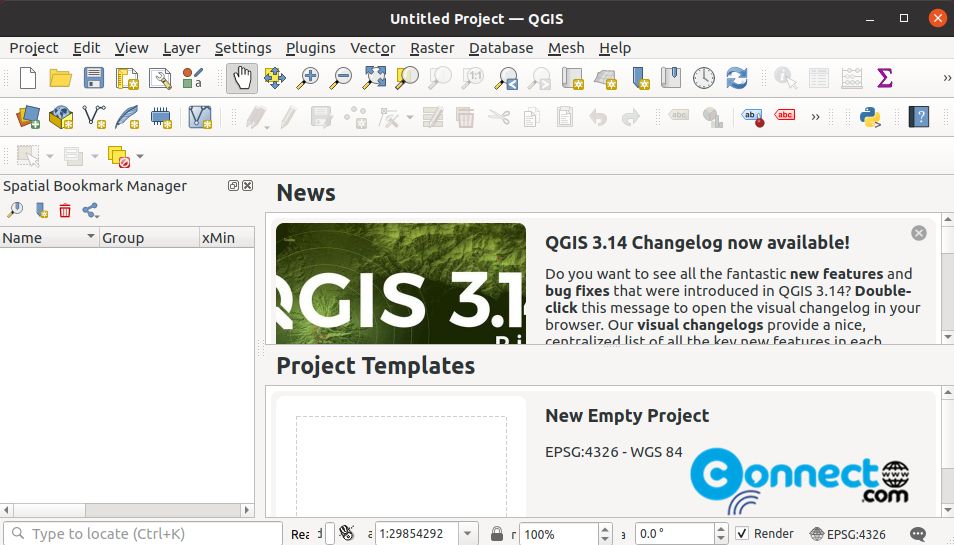QGIS is a free and open source Geographic Information System application for Windows, MacOS, Android and Linux. It is released under the GNU General Public License. In QGIS you can view combinations of vector and raster data in different formats. It supports PostGIS, SpatiaLite and MS SQL Spatial, Oracle Spatial,GeoPackage, ESRI Shapefile, MapInfo, SDTS, GML, GeoTIFF, ERDAS IMG, ArcInfo ASCII GRID, JPEG, PNG, WMS, WMTS, WCS, WFS, and WFS-T and ODS, XLSX. It also comes with plugin support to extend its features.

It comes with build-in QGIS browser, DB Manager, Print layout, Report, bookmarks and Annotation tools. You can also create, edit, manage and export vector and raster layers in several formats in QGIS. Using this you can publish your data through the WMS, WCS and WFS protocols on the Internet using a webserver.
Install QGIS on Ubuntu
QGIS is available as a flatpak package and native Ubuntu installation.
Install QGIS via Flatpak:
To install any flatpak package on ubuntu, first you need to install the flatpak and flathub on your system. Follow the below tutorial to install and setup flatpak on your system if don’t have. After the installation just restart your pc.
Open the terminal (ctrl+alt+t) and run QGIS flatpak installation command.
flatpak install flathub org.qgis.qgis
Then run QGIS via below command.
flatpak run org.qgis.qgis
Install QGIS:
In terminal run below commands.
sudo apt install gnupg software-properties-common
wget -qO - https://qgis.org/downloads/qgis-2020.gpg.key | sudo gpg --no-default-keyring --keyring gnupg-ring:/etc/apt/trusted.gpg.d/qgis-archive.gpg --import
sudo chmod a+r /etc/apt/trusted.gpg.d/qgis-archive.gpg
sudo add-apt-repository "deb https://qgis.org/debian `lsb_release -c -s` main"
sudo apt update
sudo apt install qgis qgis-plugin-grass
That’s it.







Pingback: KADAS Albireo Mapping Application | CONNECTwww.com